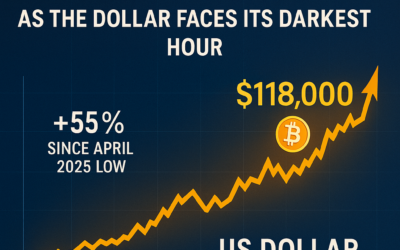Introduction
Once a beacon of opportunity and adventure, the United States is now losing favor among a growing number of Southeast Asian travelers. A recent survey reveals a sharp drop in interest, with nearly 80% of respondents saying the U.S. is becoming less attractive as a travel destination. Yet, beneath the surface, a complex picture emerges—one of rising concerns, cultural pull, and political consequences.
One of the Best Broker in Europe
While the spotlight here is on the tourism decline, it also opens the door for discerning investors and travel industry players. Booking platforms, hospitality chains, and international brokers in Europe should take notice: shifting global sentiment reshapes capital flows and travel trends—and presents new entry points for investors to act before the herd does.
Financial Performance
The fall in global interest, particularly from countries like Singapore and Canada, suggests tangible revenue impacts for U.S. airlines, hotels, and tourism-adjacent businesses. Brands that rely heavily on international visitors may need to adjust their financial projections.
However, not all markets are retreating. Vietnam and the Philippines, two countries with large U.S. diasporas, are seeing increased curiosity. A CNBC Travel survey of 6,000 respondents between May and June 2025 reveals that 57% of Vietnamese and 49% of Filipinos report rising interest in visiting the U.S.
Key Highlights
- 80% of Southeast Asians believe the U.S. is becoming less attractive.
- Concerns: Discrimination, gun violence, Trump-era policies, and tariffs.
- Filipino and Vietnamese travelers still show strong interest, driven by diaspora ties and cultural influence.
- Singaporeans are the most skeptical, with 55% less interested than six months ago.
Profitability and Valuation
U.S.-focused travel and hospitality companies may face a valuation reset if this trend solidifies. However, selective exposure to Filipino and Vietnamese outbound travel flows could offer a buffer—and even a contrarian growth thesis for companies targeting those regions.
Debt and Leverage
Companies highly leveraged to global travel recovery—particularly airlines and hotel chains in the U.S.—must consider geographic revenue sensitivity. Diversification into non-American markets or marketing to resilient audiences (e.g., Filipinos) could ease pressure on balance sheets.
Growth Prospects
The Southeast Asian tourism market is evolving rapidly. While the U.S. loses appeal, destinations like Japan, Korea, and Europe are benefiting. For travel brands and tourism-linked investors, reallocating capital and marketing toward receptive regions could unlock outsized returns.
Technical Analysis
For investors tracking U.S.-based hospitality ETFs or airline stocks:
- Short-Term Outlook (1–3 months): Sideways movement expected due to peak summer demand but weak international bookings.
- Medium-Term Outlook (6–12 months): Bearish trend likely if political headlines and tariff uncertainty persist.
- Long-Term Outlook (3 years): Recovery depends on visa reform, safety perception, and leadership narrative post-2026.
Key levels:
- Support: $95 (JETS ETF)
- Resistance: $120
- Stop-loss: $88
Potential Catalysts
- Shift in U.S. leadership or more inclusive immigration messaging.
- Tariff rollbacks with Vietnam and Southeast Asian countries.
- Soft-power campaigns through film, entertainment, or influencer-driven campaigns.
- Strategic tourism deals with ASEAN governments.
Leadership and Strategic Direction
The Trump administration’s policies are clearly influencing travel perceptions. His return has reignited tensions over immigration, tariffs, and safety. Any pivot in political leadership or narrative could significantly reshape global perceptions and restart travel momentum.
Impact of Macroeconomic Factors
- Exchange rates: A strong dollar makes U.S. travel less appealing.
- Geopolitics: Tariffs on Vietnam (cut from 46% to 20%) hint at volatility.
- Gun violence and social unrest: Key deterrents, especially among Southeast Asian families and solo travelers.
Total Addressable Market (TAM)
Southeast Asia’s outbound travel market is projected to surpass $300 billion by 2030. While the U.S. is losing ground, its loss is others’ gain—countries like Japan, Australia, and Western Europe are capturing the redirected travel demand.
Market Sentiment and Engagement
Online engagement paints a telling story. From April to June 2025, there were over 87,000 posts discussing U.S. travel. But sentiment varied:
- India: 96% neutral or positive
- Canada: 45% negative
- U.S. residents: highest negative sentiment toward domestic travel experience
Such trends are echoed in real-world behavior: interest fell sharply in Europe and Canada, while rising in UAE, India, and Hong Kong.
Conclusions, Target Price Objectives, and Stop Losses
The U.S. travel brand is under pressure—but not finished.
Short-Term Target (Travel stocks): -5% to -10% downside from current levels
Mid-Term Target: Stabilization if tariffs remain low
Long-Term Target: Rebound possible with leadership change and improved global messaging
Stop Loss for Exposure: Consider reducing exposure to U.S.-dependent travel equities by 25–30% if Singapore and European data continues to trend downward.
Discover More
For more insights into analyzing value and growth stocks poised for sustainable growth, consider this expert guide. It provides valuable strategies for identifying high-potential value and growth stocks.
We also have other highly attractive stocks in our portfolios. To explore these opportunities, visit our investment portfolios.
This analysis serves as information only and should not be interpreted as investment advice. Conduct your own research or consult with a financial advisor before making investment decisions.
Looking to Educate Yourself for More Investment Strategies?
Check out our free articles where we share our top investment strategies. They are worth their weight in gold!
📖 Read them on our blog: Investment Blog
For deeper insights into ETF investing, trading, and market strategies, explore these expert guides:
📘 ETF Investing: ETFs and Financial Serenity
📘 Technical Trading: The Art of Technical & Algorithmic Trading
📘 Stock Market Investing: Unearthing Gems in the Stock Market
📘 Biotech Stocks (High Risk, High Reward): Biotech Boom
📘 Crypto Investing & Trading: Cryptocurrency & Blockchain Revolution
Did you find this article insightful? Subscribe to the Bullish Stock Alerts newsletter so you never miss an update and gain access to exclusive stock market insights: https://bullishstockalerts.com/#newsletter.
Avez-vous trouvé cet article utile? Abonnez-vous à la newsletter de Bullish Stock Alerts pour recevoir toutes nos analyses exclusives sur les marchés boursiers : https://bullishstockalerts.com/#newsletter.









0 Comments